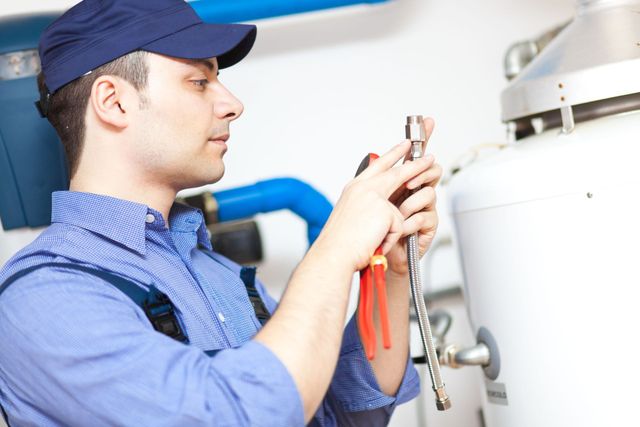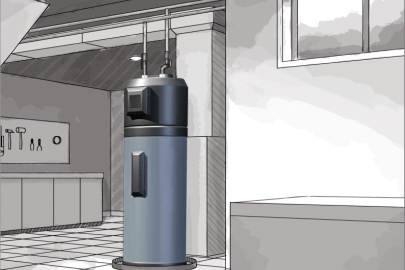Best Practices for Caring for Your Home's Hot Water SystemSteps to Effectively Maintain Your Home's Hot Water SystemHow to Keep Your Home's Hot Water System Functioning Well
Best Practices for Caring for Your Home's Hot Water SystemSteps to Effectively Maintain Your Home's Hot Water SystemHow to Keep Your Home's Hot Water System Functioning Well
Blog Article
Everybody may have their private conception on the subject of Tips For Maintaining Your Hot Water Heater.

Warm water is necessary for day-to-day comfort, whether it's for a revitalizing shower or cleaning meals. To ensure your hot water system runs successfully and lasts much longer, normal maintenance is key. This write-up provides functional pointers and understandings on just how to maintain your home's hot water system to prevent disruptions and expensive repairs.
Intro
Maintaining your home's warm water system might seem difficult, but with a few simple steps, you can ensure it runs smoothly for several years ahead. This guide covers whatever from recognizing your hot water system to do it yourself maintenance suggestions and knowing when to call expert help.
Relevance of Maintaining Your Warm Water System
Regular upkeep not only prolongs the lifespan of your warm water system yet also ensures it runs efficiently. Neglecting upkeep can cause decreased performance, higher power expenses, and even premature failing of the system.
Signs Your Warm Water System Needs Maintenance
Understanding when your warm water system requires attention can protect against major concerns. Look out for indications such as irregular water temperature level, strange noises from the heater, or rusty water.
Recognizing Your Hot Water System
Prior to diving right into maintenance jobs, it's useful to comprehend the fundamental parts of your warm water system. Generally, this includes the hot water heater itself, pipelines, anode poles, and temperature level controls.
Monthly Maintenance Tasks
Normal regular monthly checks can assist catch minor issues prior to they rise.
Purging the Hot Water Heater
Flushing your water heater eliminates sediment buildup, boosting performance and extending its life.
Monitoring and Replacing Anode Rods
Anode rods prevent corrosion inside the tank. Checking and changing them when worn is essential.
Checking and Readjusting Temperature Level Settings
Readjusting the temperature level settings guarantees optimum efficiency and security.
Do It Yourself Tips for Upkeep
You can carry out numerous upkeep jobs yourself to maintain your warm water system in leading condition.
Checking for Leaks
Routinely examine pipelines and links for leaks, as these can lead to water damages and greater bills.
Examining Stress Relief Valves
Evaluating the pressure safety valve ensures it functions appropriately and stops excessive stress build-up.
Protecting Pipes
Shielding hot water pipelines decreases warmth loss and can conserve energy.
When to Call a Specialist
While DIY upkeep is helpful, some issues call for expert knowledge.
Complex Problems Calling For Expert Aid
Examples consist of major leakages, electrical troubles, or if your water heater is continually underperforming.
Routine Specialist Maintenance Perks
Professional upkeep can consist of extensive inspections, tune-ups, and making sure conformity with safety criteria.
Final thought
Normal maintenance of your home's warm water system is essential for effectiveness, long life, and cost savings. By adhering to these suggestions and recognizing when to look for professional assistance, you can make certain a reputable supply of warm water without unforeseen disruptions.
How to Maintain an Instant Hot Water Heater
Before tinkering with your hot water heater, make sure that it’s not powered on. You also have to turn off the main circuit breaker and shut off the main gas line to prevent accidents. Also turn off the water valves connected to your unit to prevent water from flowing into and out of the appliance. 2. When you’re done, you have to detach the purge valves’ caps. These look like the letter “T” and are situated on either side of the water valves. Doing so will release any pressure that has accumulated inside the valves while at the same time avoid hot water from shooting out and burning your skin. 3. When the purge valves’ caps are removed, you have to connect your hosing lines to the valves. Your unit should have come with three hoses but if it didn’t, you can purchase these things from any hardware or home repair shops. You can also get them from retail stores that sell water heating systems. Read the user’s manual and follow it to complete this task properly. When the hosing lines are connected, open the purge port’s valves. 4. You should never use harsh chemical cleaners or solutions when cleaning your unit. Make use of white vinegar instead. It should be undiluted and you’ll probably use about 2 gallons. 5. Now flush your water heater. This task should probably take about 40 minutes. We can’t give you specific directions for this because the procedure is carried out depending on the type, model and brand of your heater. With that being said, refer to the user’s manual. 6. When you’re done draining the unit, you have to turn off the purge port valves again. Remove the hosing lines that you earlier installed on each of the water valves. Put the valve caps (purge port) back in their respective places and be very careful so as not to damage the rubber discs that are found inside these caps. 7. Now that everything’s back in place, check your user’s manual again to find out how to reactivate your water heating system. 8. Once it is working, turn one of your hot water faucets on just to let air pass through the heater’s water supply pipes. Leave the tap on until water flows smoothly out of it. https://www.orrplumbing.com/blog/2014/september/how-to-maintain-an-instant-hot-water-heater/

As a fervent reader about How to Maintain Your Water Heater & Prolong its Life, I think sharing that topic was really helpful. So long as you enjoyed reading our blog post kindly do not forget to pass it around. Thanks for taking the time to read it.
This Resource Report this page